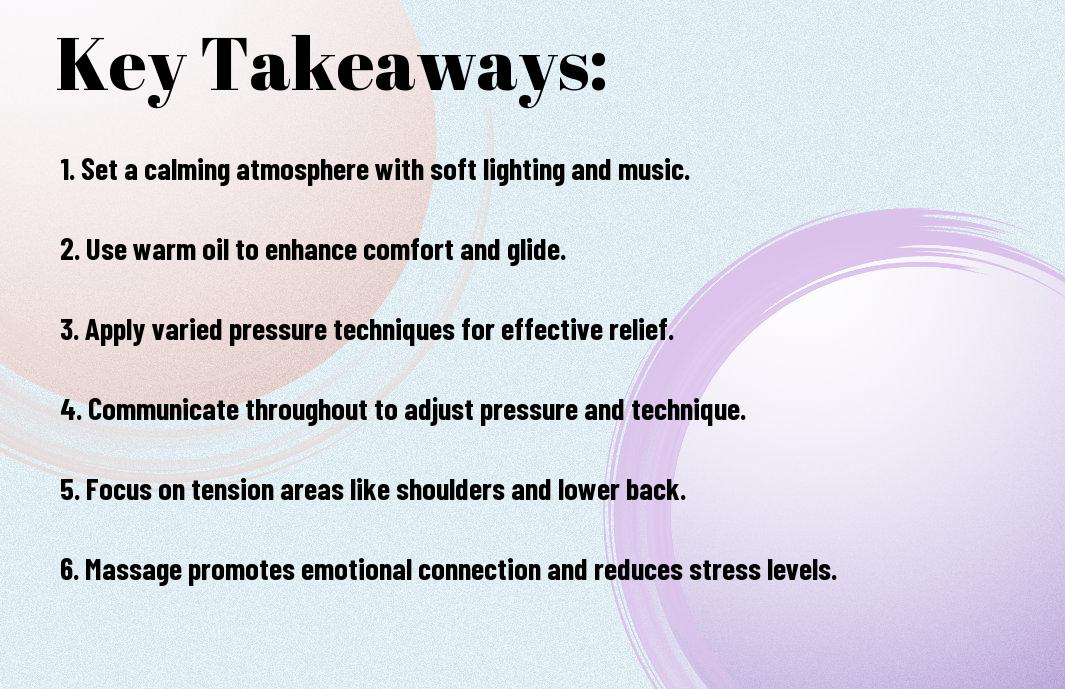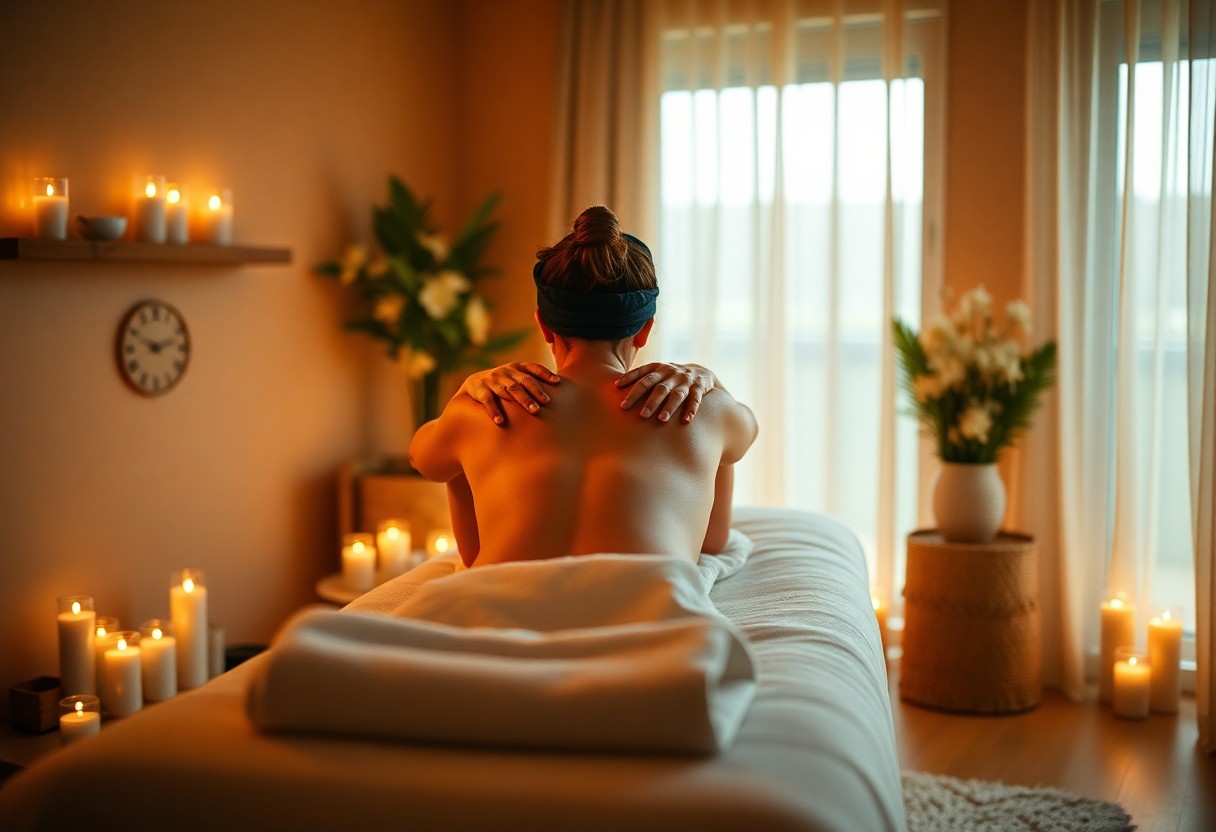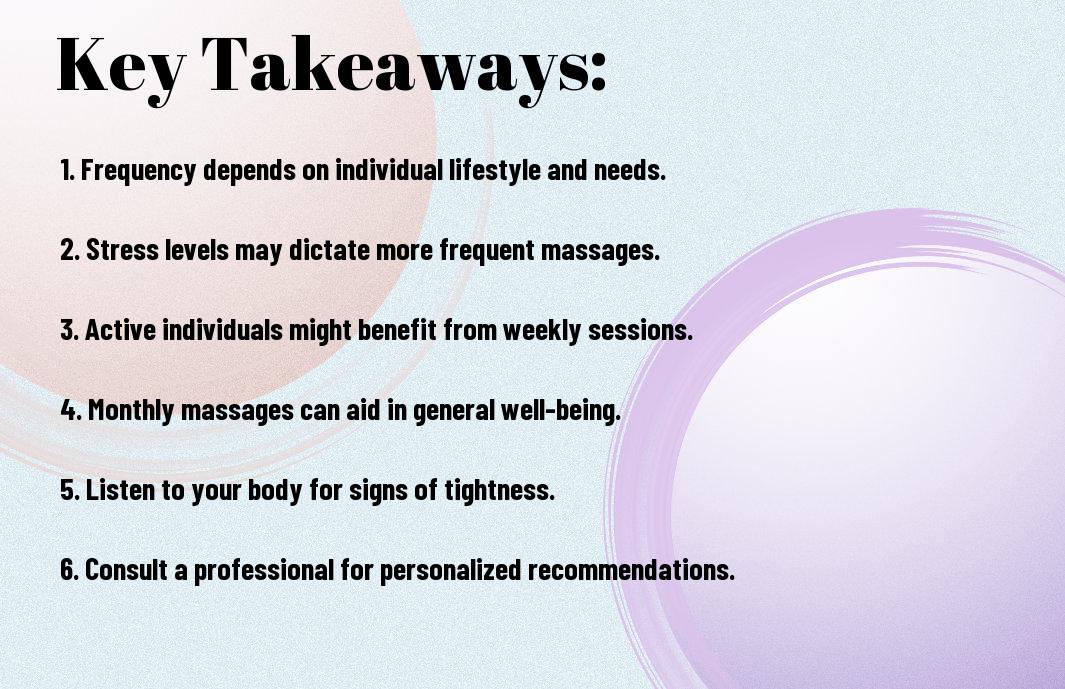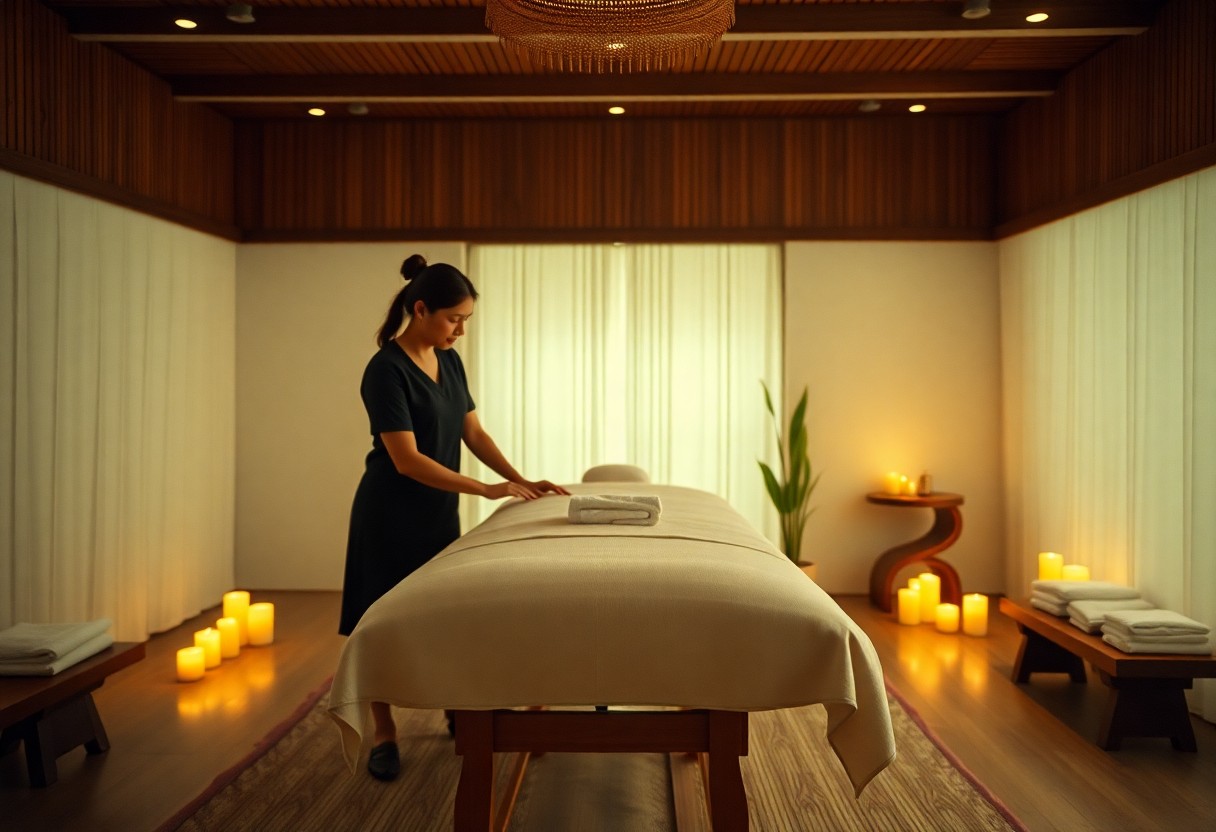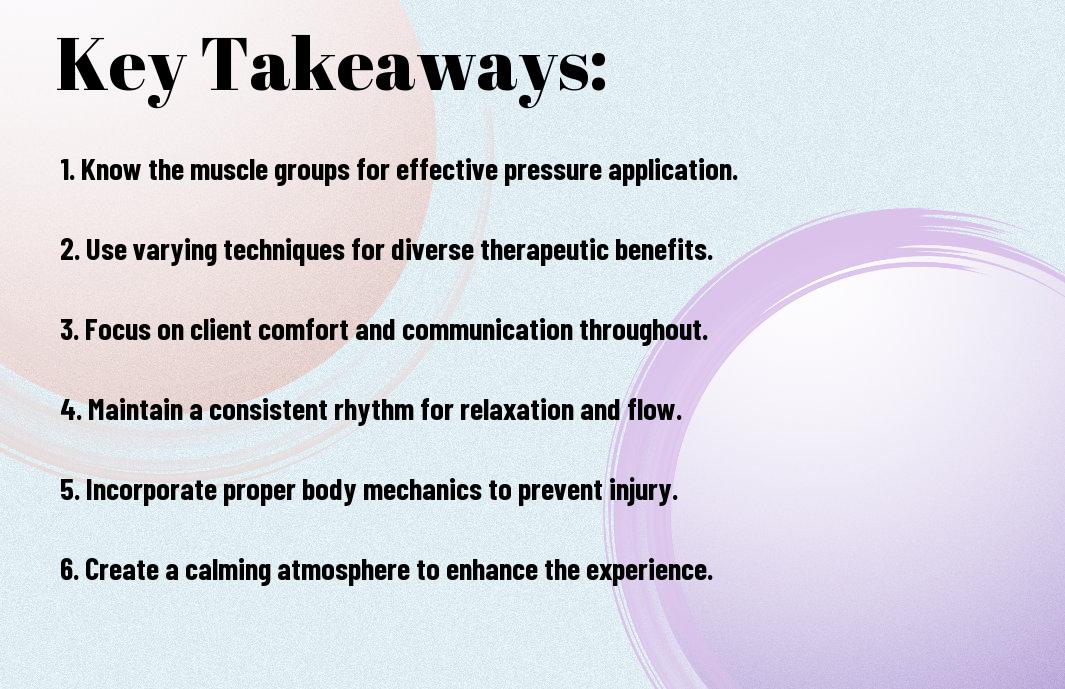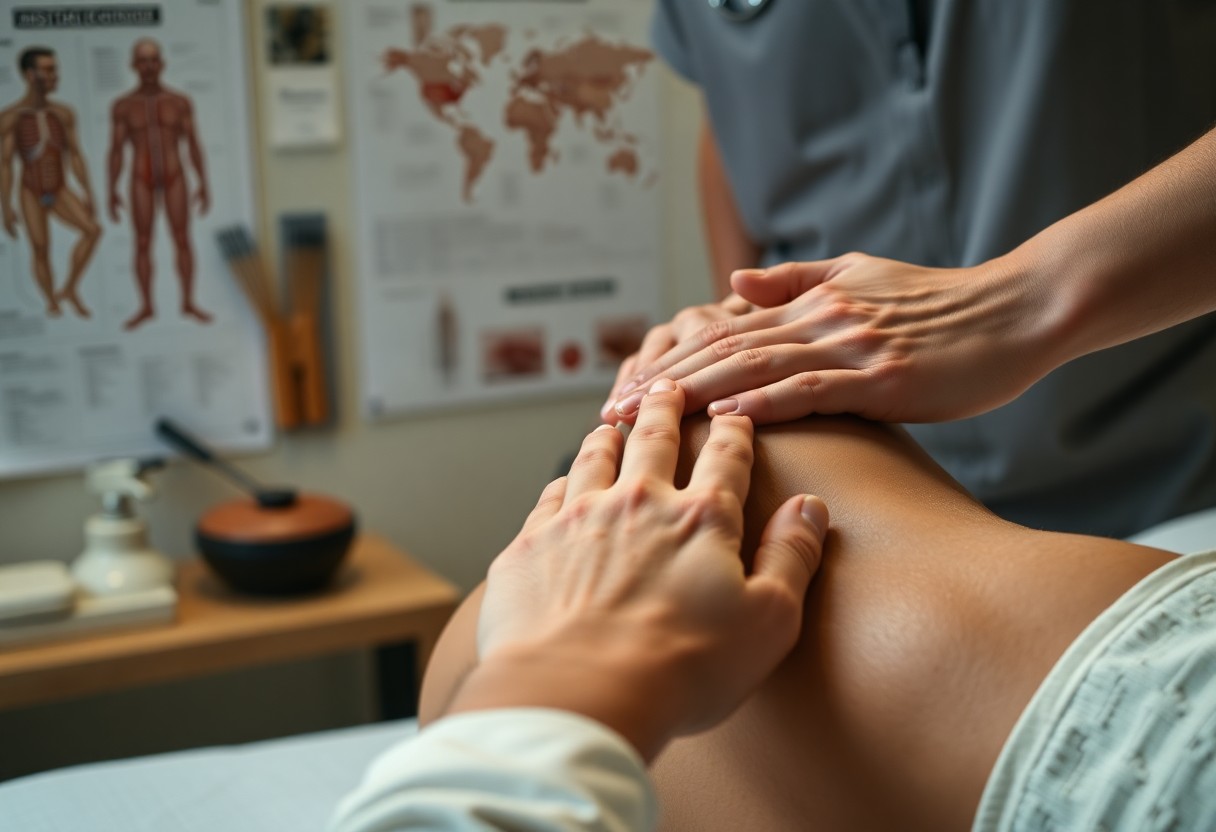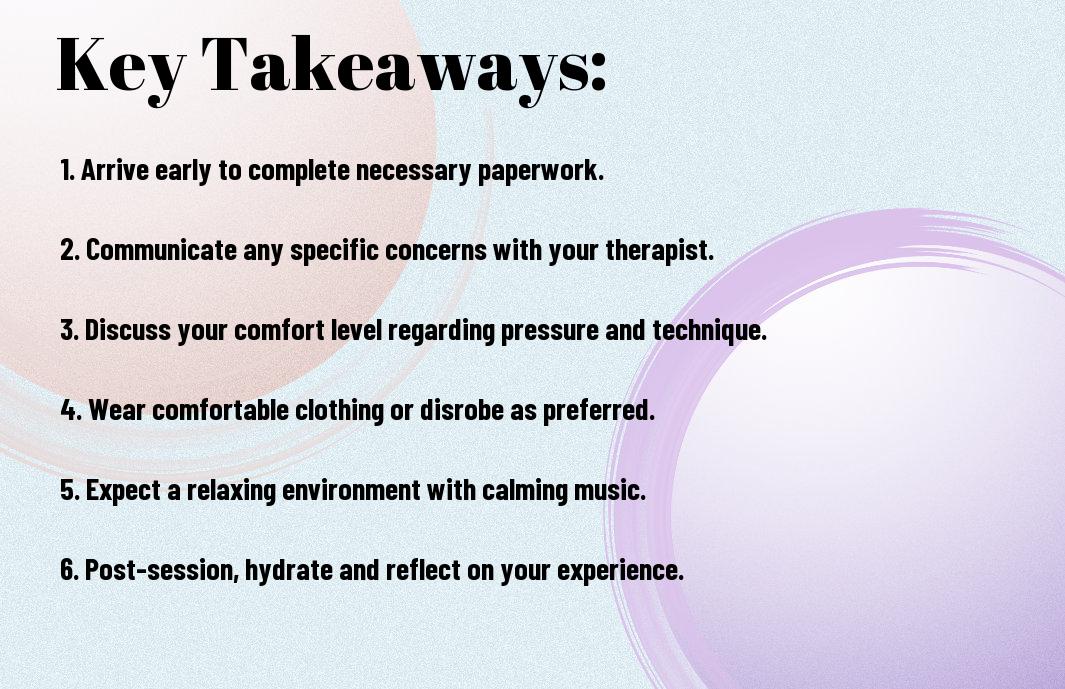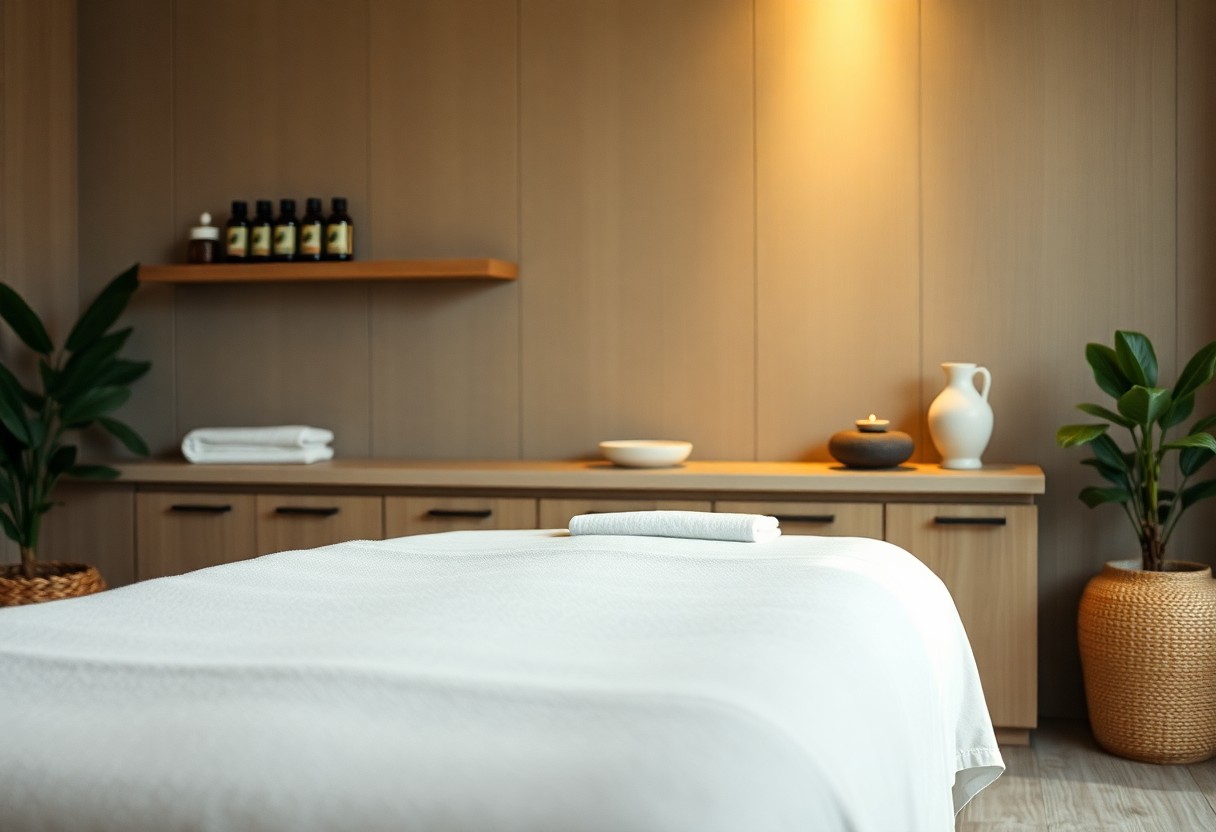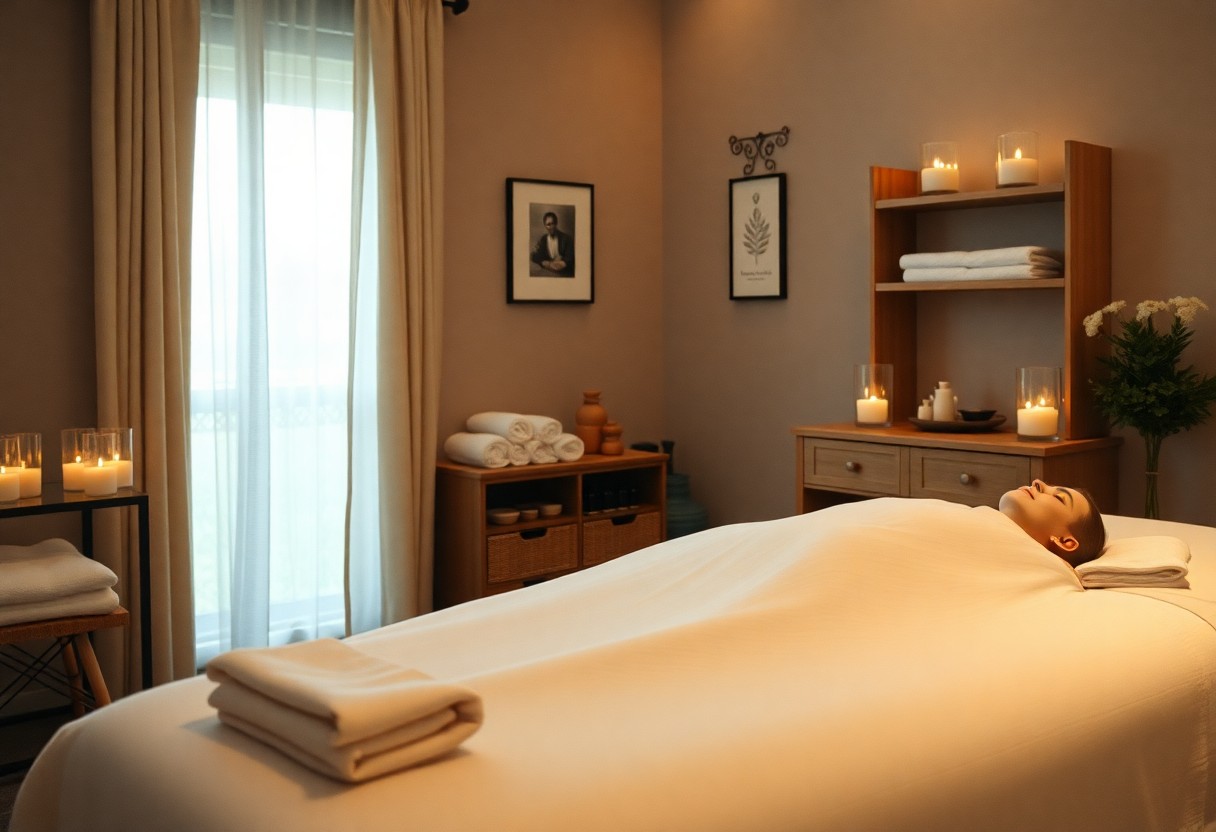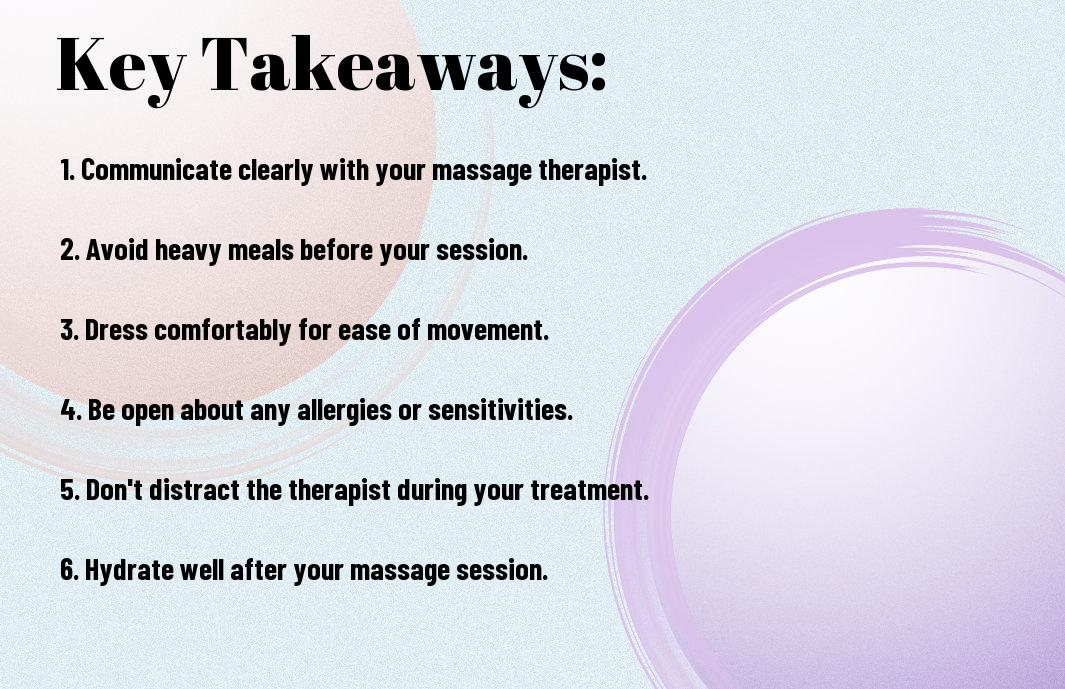You can transform an ordinary evening into a soothing experience by giving your partner a relaxing back massage. Understanding the techniques and benefits behind massage therapy allows you to foster deeper connection and intimacy. This guide will walk you through the steps to provide a comforting massage while highlighting the many advantages that massage brings, not just for relaxation, but for overall well-being. With the right approach, you’ll learn how to make your partner feel cherished and rejuvenated through the art of massage.
Key Takeaways:
- Technique Matters: Learning specific massage techniques can greatly enhance the experience and effectiveness of the back massage.
- Setting the Atmosphere: Creating a calming environment with dim lighting, soothing music, and comfortable temperatures can make the massage more enjoyable.
- Promotes Connection: Engaging in massage with your partner fosters intimacy, supports emotional bonding, and can improve overall relationship satisfaction.
The Benefits of Massage
A massage offers a wide array of benefits, extending beyond mere relaxation. Engaging in massage can improve your overall well-being by alleviating physical tension, reducing stress levels, and fostering deeper emotional connections with your partner. Understanding these benefits may encourage you to incorporate this therapeutic practice into your shared routines, enhancing both your physical and emotional intimacy.
Physical Benefits
One of the primary physical benefits of massage is its ability to relieve muscle tension and improve blood circulation. This enhanced circulation promotes healing and reduces pain, helping you both recover after workouts or long days at work. Additionally, massage can boost your immune system, contributing to your overall physical health.
Emotional Benefits
At its core, massage acts as a powerful tool for emotional well-being. It not only helps to reduce anxiety and depression but also fosters a sense of calm and relaxation. This shared activity can create a deeper bond between you and your partner, enhancing feelings of trust and intimacy.
It is important to acknowledge that the emotional benefits of massage extend beyond the moment you spend together. The release of endorphins and oxytocin during a massage promotes feelings of happiness and connection, allowing you to feel more relaxed and content both during and after the experience. This can lead to better communication and a more harmonious relationship over time.
Preparing for the Massage
Any effective back massage begins with thorough preparation. Take some time to create a comfortable space where both you and your partner can relax. Ensure you have ample time set aside, and both your mind and body are ready for the soothing experience ahead. A little planning goes a long way in enhancing the quality of the massage and ensuring both of you enjoy the process.
Creating a Relaxing Environment
Along with a serene atmosphere, consider using soft lighting, gentle music, and pleasant scents to set the mood. Dim the lights or use candles to create a warm ambiance. Play calm, instrumental music to help both of you unwind. You can also consider using imperative oils, such as lavender or chamomile, to promote relaxation and enhance the overall experience.
Essential Tools and Supplies
Below are some imperative tools and supplies that will enhance the massage experience. A comfortable surface for your partner to lie on is key, whether it’s a massage table, bed, or mat. You’ll also want high-quality massage oils or lotions to reduce friction on the skin and make your motions smoother. Extra towels can help keep the area dry and comfortable.
With the right tools and supplies, you can turn an ordinary back massage into an extraordinary one. High-quality massage oils not only facilitate better movements but can also impart soothing scents that enhance relaxation. A good towel provides support and absorbs excess oil, allowing you to focus entirely on the massage without distractions. Additionally, using pillows for neck support helps your partner maintain a comfortable position during the session, making for a more enjoyable and effective massage experience.
Techniques for a Soothing Back Massage
To create a truly soothing back massage experience for your partner, you can use a variety of techniques. These techniques not only enhance relaxation but also promote overall well-being. For detailed guidance, check out How to Give a Massage to Your Partner: Tips & Techniques and discover new ways to connect through touch.
Effleurage
Before you start the massage, it’s beneficial to use effleurage, a gentle stroking technique. This serves to warm up the muscles and create a calming ambiance. Use your palms to apply light pressure, gliding smoothly along the back in long, sweeping motions. This will effectively ease tension and prepare your partner for deeper techniques.
Petrissage
By using petrissage, you can further relieve tension in your partner’s back. This technique involves kneading and squeezing the muscles, similar to how a chef kneads dough. Grip a section of the back with your palms and fingers, gently pulling away from the spine and working your way outward. This helps to promote circulation and eliminate knots.
Plus, petrissage can deeply engage the muscles, leading to profound relaxation. Use varying pressures and rhythms to ensure your partner enjoys an individualized experience. This technique can be paired with effleurage for a well-rounded massage routine that leaves your partner feeling revitalized.
Friction
Between the strokes of massage, incorporating friction is vital for breaking down tightness in the muscles. Use your fingertips or the palms of your hands to apply deeper pressure in circular movements. This can help address specific areas of tension and encourage blood flow to those parts, providing a therapeutic effect.
Hence, friction not only alleviates tension but also enhances the effectiveness of your massage. Focus on areas that may feel particularly sore or tight, applying steady, intentional pressure. This technique can be incredibly beneficial to ensure your partner walks away feeling completely relaxed and rejuvenated.
Communicating with Your Partner
For a successful back massage, open communication with your partner is key. Discussing their likes and dislikes can help you tailor the experience to better meet their needs. Taking a moment to understand each other’s comfort levels will create a more enjoyable atmosphere, allowing you both to connect more deeply during this intimate act of care.
Understanding Their Preferences
At the start of the massage, ask your partner about their specific preferences regarding pressure, focus areas, and any sensitive spots. You might want to inquire if they have had any prior massages and what they enjoyed from those experiences. This exchange sets the stage for a fulfilling session where you can truly cater to what they need.
Ensuring Comfort and Safety
Above all, prioritize your partner’s comfort and safety throughout the massage. Create a serene environment, free from distractions, and ensure the temperature is suitable for relaxation. Ask them if they require any adjustments during the massage to enhance their experience.
Comfort is necessary for a successful massage experience. Use a soft surface for your partner to lie on, and adjust the pillows or blankets as necessary for their support. Verify that your partner has enough space to relax and breathe easily. Be attentive to their non-verbal cues, and check in with them frequently. This will help you create a safe and nurturing atmosphere where they can unwind and fully enjoy the benefits of the massage.
Common Mistakes to Avoid
Once again, perfecting your partner’s massage involves being mindful of common pitfalls. Many people get caught up in the moment and inadvertently make mistakes that can detract from the overall experience. By identifying and avoiding these errors, you can ensure that your massage is both enjoyable and beneficial, enhancing your partner’s relaxation and well-being.
Overusing Pressure
Along with the blissful experience of a massage comes the risk of applying too much pressure. It’s important to gauge your partner’s comfort levels. Too much intensity can lead to discomfort or even pain, defeating the purpose of a relaxing massage.
Neglecting Areas of Tension
Behind the shoulders and in the lower back, tension can build up unnoticed. Focusing solely on the usual areas, like the neck and back, may leave your partner feeling unresolved discomfort elsewhere. Addressing these often-overlooked locations is vital for a truly effective massage.
At times, specific areas, like the shoulder blades and lower back, hold significant tension due to stress or prolonged poor posture. By spending extra time gently probing these regions, you allow for the release of pent-up tension and contribute to an overall improvement in your partner’s physical comfort. Paying attention to these zones can elevate your massage from a simple relaxation technique to a transformative experience that addresses deeper muscle issues.
Incorporating Aromatherapy and Music
Many people underestimate the impact of ambiance on the massage experience. By integrating aromatherapy and calming music, you can transform a simple back massage into a multi-sensory relaxation journey. The right scents and sounds will help your partner unwind and fully embrace the relaxation you’re providing, enhancing the overall effect of your massage.
Choosing the Right Essential Oils
Aromatherapy plays a significant role in promoting relaxation during a massage. You can select imperative oils that help reduce stress and tension, such as lavender, chamomile, or bergamot. To create a soothing atmosphere, blend these oils with a carrier oil before applying them to your partner’s skin, ensuring they experience the full benefits of aromatherapy while you massage.
Selecting Calming Soundscapes
At the same time, the sounds in your environment can greatly influence the relaxation level during a massage. Choose calming soundscapes like gentle ocean waves, soft rainfall, or serene instrumental music to create a peaceful atmosphere. This auditory backdrop will support a tranquil state of mind, allowing your partner to escape from distractions and fully absorb the therapeutic effects of your massage.
Oils are best used in combination with calming music to foster a sense of tranquility. Experiment with different soundscapes to discover which ones resonate with you and your partner. You might find that certain melodies evoke a soothing response, enhancing relaxation. Adapting the sound and scent to your partner’s preferences will help create a personalized massage experience, bringing deeper relaxation and satisfaction.
Summing up
To wrap up, giving your partner a relaxing back massage involves not only the techniques you apply but also the intention behind your touch. By focusing on their comfort and integrating elements like appropriate pressure, calming ambiance, and your emotional connection, you can transform a simple massage into a powerful tool for stress relief and emotional intimacy. This holistic approach makes the experience beneficial for both of you, enhancing relaxation and deepening your bond.
FAQ
Q: How can I create a relaxing environment for giving a back massage?
A: To create a calming atmosphere, consider dimming the lights and playing soft music. Use comfortable pillows or a massage table if available. Aromatherapy can enhance the experience, so you might want to light some scented candles or use crucial oils like lavender or eucalyptus. Ensure the room is at a comfortable temperature to help your partner relax fully.
Q: What techniques can I use to give a proper back massage?
A: Start with gentle strokes to warm up the muscles. You can use techniques like effleurage (long, gliding strokes), petrissage (kneading), and friction (circular movements) on different areas of the back. Pay attention to areas of tension and adapt your pressure. Don’t hesitate to communicate with your partner about what feels good.
Q: How long should a back massage last for optimal relaxation?
A: A back massage generally benefits from a duration of 30 minutes to an hour. This allows you to thoroughly address tension points while providing a sense of relaxation. However, it’s important to consider your partner’s preference; some may enjoy shorter sessions focused on specific areas, while others might appreciate a longer, more comprehensive experience.
Q: Why is massage considered beneficial beyond just relaxation?
A: Massage offers various health benefits beyond relaxation, such as improved circulation, reduced muscle tension, and enhanced flexibility. It can aid in alleviating pain and stress, improve sleep quality, and even boost immunity. The skin has numerous nerve endings that can stimulate feelings of well-being, contributing to emotional health as well.
Q: What should I avoid while giving a back massage?
A: Avoid using excessive pressure, especially on bony areas or sensitive spots. Be cautious with any injuries or medical conditions your partner may have; check in regularly to ensure their comfort. Also, refrain from massaging directly over the spine or any areas with inflammation. Make sure your hands are clean, and consider using a massage oil to reduce friction and enhance comfort.
